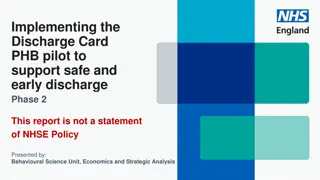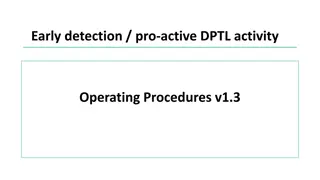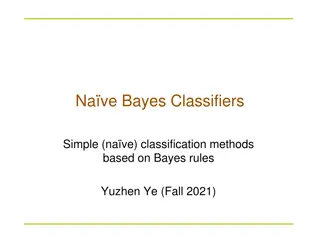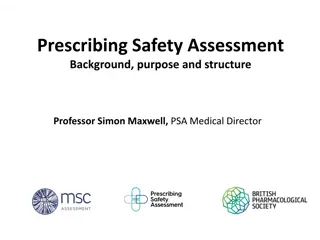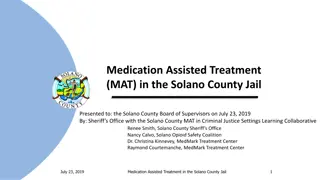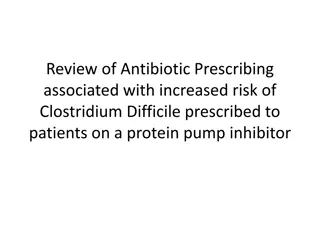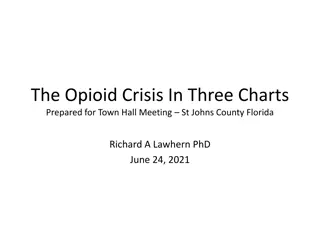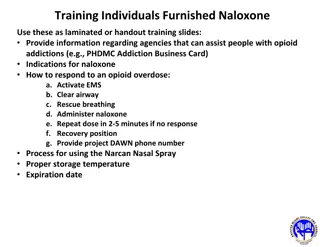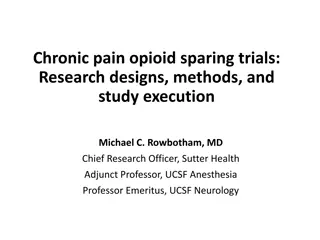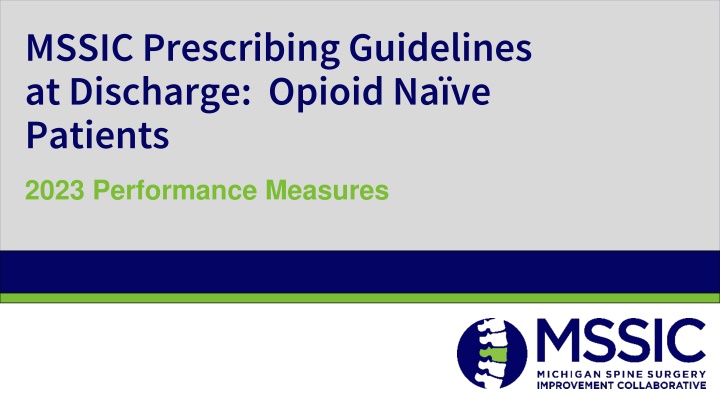
Prescribing Guidelines for Opioid-Naive Patients: MSSIC 2023 Performance Measures
Explore the importance of opioid prescribing guidelines for opioid-naive patients post-surgery. MSSIC aims to reduce opioid prescriptions at discharge by implementing collaborative-wide and site-specific performance measures, focusing on procedures like Lumbar Decompression and Anterior Cervical surgeries for opioid-naive patients. The data showcases the potential for positive changes in discharge prescribing practices to combat the opioid epidemic effectively.
Download Presentation

Please find below an Image/Link to download the presentation.
The content on the website is provided AS IS for your information and personal use only. It may not be sold, licensed, or shared on other websites without obtaining consent from the author. If you encounter any issues during the download, it is possible that the publisher has removed the file from their server.
You are allowed to download the files provided on this website for personal or commercial use, subject to the condition that they are used lawfully. All files are the property of their respective owners.
The content on the website is provided AS IS for your information and personal use only. It may not be sold, licensed, or shared on other websites without obtaining consent from the author.
E N D
Presentation Transcript
MSSIC Prescribing Guidelines at Discharge: Opioid Na ve Patients 2023 Performance Measures
Background The opioid epidemic continues to represent a significant public health crisis in the U.S. Prescription opioid use has been recognized as a key contributor to this epidemic and surgeons play an important role in this epidemic Opioids prescribed after surgery are associated with a well- documented risk of chronic opioid dependence, especially in opioid-na ve patients
Background In recent years, MSSIC has collaborated with the BCBSM CQI, Michigan-OPEN (https://michigan-open.org), whose mission is to support providers in combating opioid misuse and partner to develop opioid prescribing guidelines for various surgical specialties Studies have demonstrated that for opioid na ve patients, post- discharge pill counts reveal that patients do not necessarily use all the opioids they are discharged with
What does the data show? MSSIC data and literature (including a study out of Mayo Clinic) support the judicious use of opiates as beneficial There is no evidence of decreased satisfaction or increased healthcare utilization with less prescribing Patients with less than or equal to 225 MME are less likely to be on opioids 90 days after surgery There is a great deal of MSSIC site variability in opioid prescribing patterns = an opportunity to make positive changes in discharge prescribing for opioid na ve patients.
Effective 10/1/22 Cases: MSSIC will implement opioid prescribing guidelines and measure the total MMEs prescribed at discharge for certain procedures for opioid na ve patients There are both collaborative-wide performance measures and site-specific performance measures aimed to reduce the number of opioids prescribed at discharge
Details: Which procedures? 1-2 level Lumbar Decompression, alone 1-2 level Anterior Cervical, alone (Anterior Cervical Corpectomy Fusion, ACDF, Arthroplasty) Which patients? Opioid Na ve patients (No opioids 30 days or > before surgery) Goal: < 225 total MME prescribed at discharge
80% or greater for 1-2 level lumbar decompression surgeries Performance Target- % of Patients Meeting the Goal of <225 MME @ Discharge 70% or greater for 1-2 level anterior cervical surgeries
Collaborative-wide measure: % of Opioid nave, 1-2 level lumbar decompression meeting the MSSIC Opioid Prescribing guideline (< 225 MME) 80% or greater meeting the guideline of 225 MME or less 65-79% of patients meet the guideline of 225 MME or less Less than 65% of patients meet the guideline of 225 MME or less 10 5 0 Collaborative-wide measure: % of Opioid na ve, 1-2 level anterior cervical surgeries meeting the MSSIC Opioid Prescribing guideline (< 225 MME) 2023 Performance Index Measures 70% or greater meeting the guideline of 225 MME or less 55-69% of patients meet the guideline of 225 MME or less Less than 50% of patients meet the guideline of 225 MME or less 10 5 0 % of Opioid na ve at the SITE with 1-2 level lumbar decompression meeting the MSSIC Opioid Prescribing guideline (< 225 MME) 80% or greater meeting the guideline of 225 MME or less 65-79% of patients meet the guideline of 225 MME or less Less than 65% of patients meet the guideline of 225 MME or less 5 3 0 % of Opioid na ve at the SITE with 1-2 level anterior cervical surgeries meeting the MSSIC Opioid Prescribing guideline (< 225 MME) 70% or greater meeting the guideline of 225 MME or less 55-69% of patients meet the guideline of 225 MME or less Less than 50% of patients meet the guideline of 225 MME or less 5 3 0
Examples 225 MME or less MSSIC Opioid Prescribing Guidelines at Discharge Opioid Na ve (No opioids 30 days or > before surgery) Patients Procedures 1-2 level lumbar decompression or 1-2 level Anterior Cervical (ACDF, ACCF, Arthroplasty) Example Discharge Meds/ Dosages # Pills (Goal < 225 MME) Codeine 30 mg, 1-2 pills Q 6 hrs. 50 or less Hydrocodone 5 mg 45 or less Hydrocodone 7.5 mg 30 or less Hydrocodone 10 mg 22 or less Oxycodone 5 mg 30 or less Oxycodone 10 mg 15 or less Tramadol 50 mg, 1-2 pills Q 6 hrs. 45 or less

